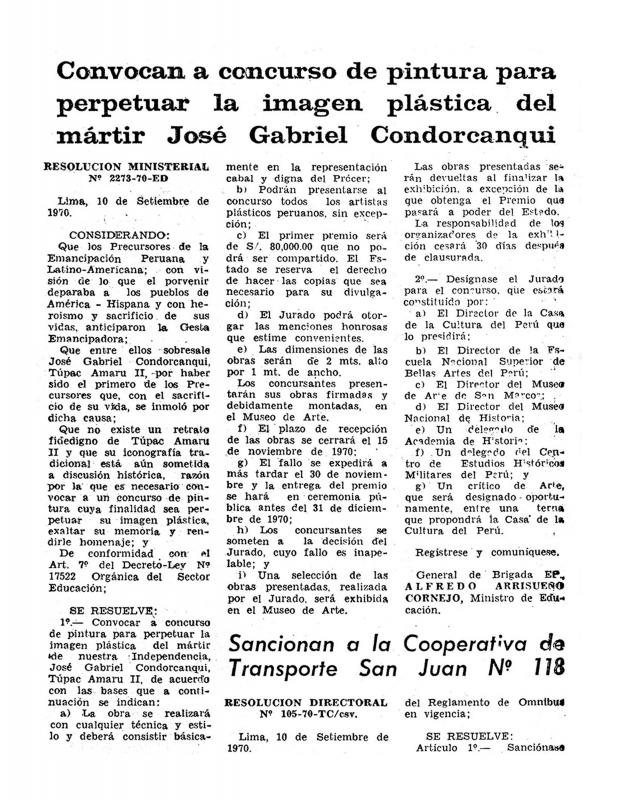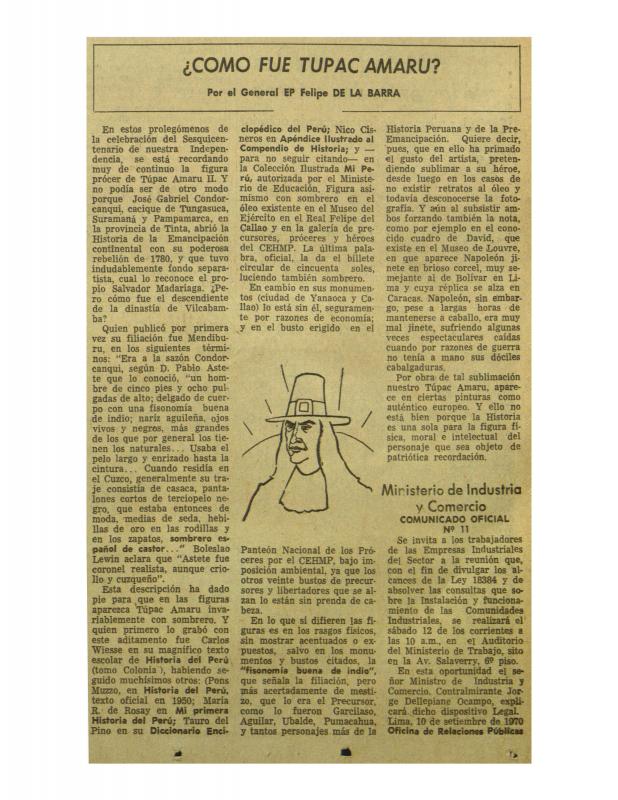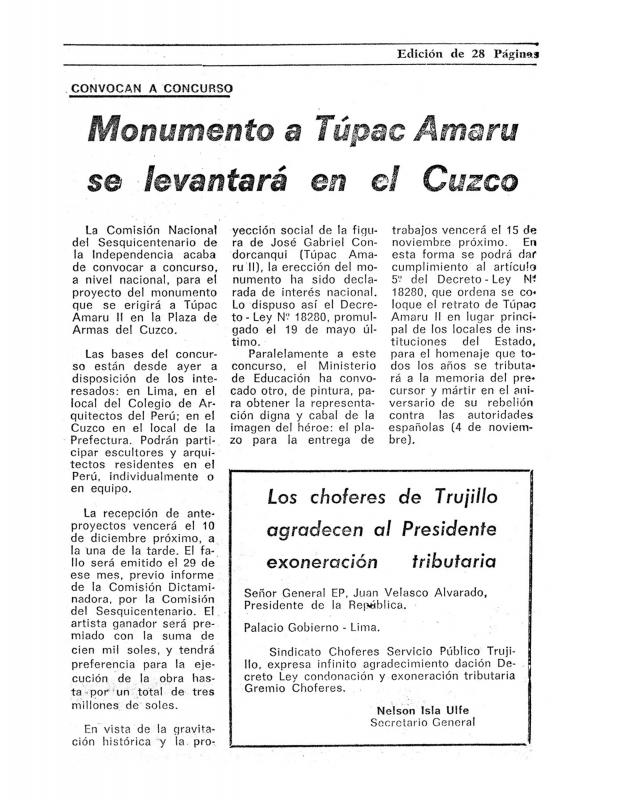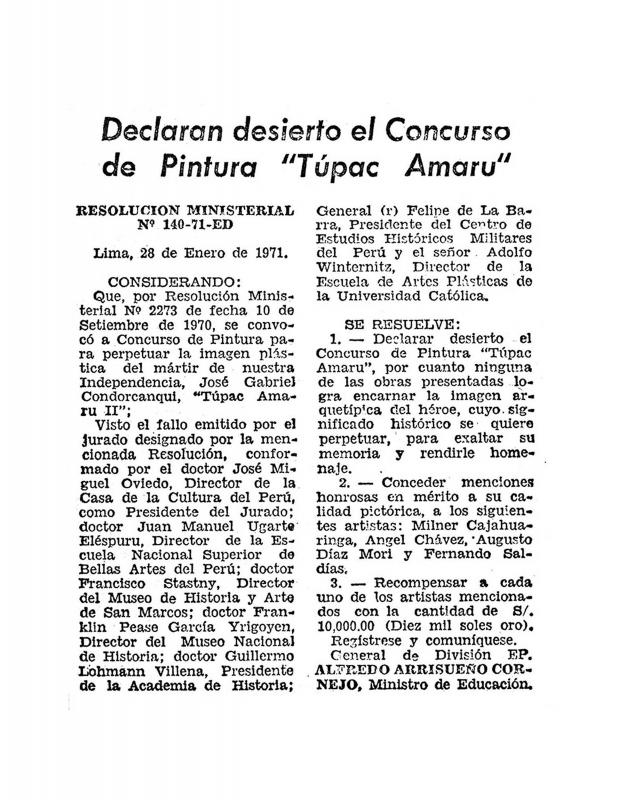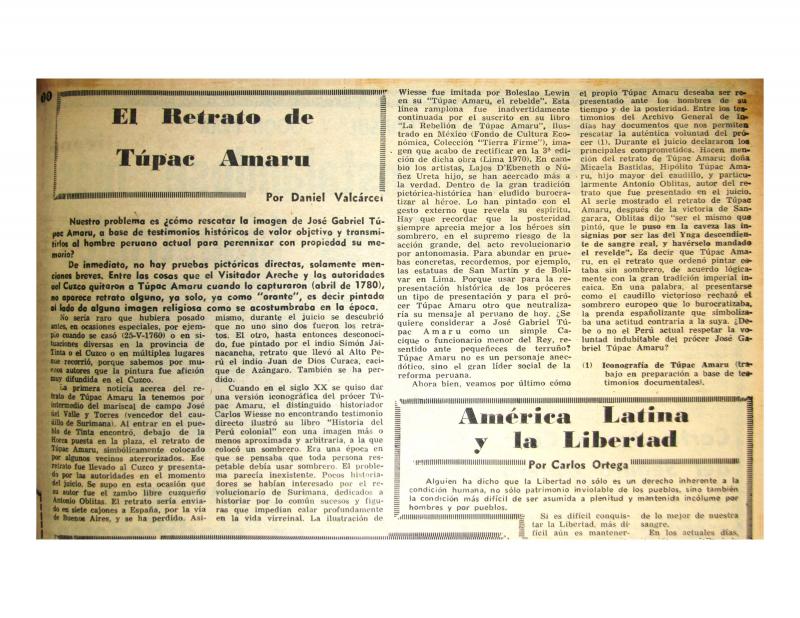In this article, Peruvian architect and urbanist Augusto Ortiz de Zevallos (b. 1949), who was also an art critic at the time, voices his objections to the premises of the Concurso Nacional de Pintura [National Painting Contest] organized by the Ministerio de Educación in the selection of the official portrait of Túpac Amaru II, indigenous forefather of independence. This was the first criticism of the polemic competition organized by the military regime in 1970 [on that subject, see in the ICAA digital archive by Alfredo Arrisueño Cornejo “Convocan a concurso de pintura para perpetuar la imagen plástica del mártir José Gabriel Condorcanqui” (doc. no. 865422)]. It was published in El Comercio, one of the most influential newspapers in Peru, just two weeks after the call for submissions was issued. The notions put forth here would be central to later voices that also objected to the competition.
José Gabriel Condorcanqui, Túpac Amaru II (1738–81), was a curaca or chief of Incan descent who, in 1780, led the most important Andean uprising against the Spanish empire. Largely ignored by traditional Spanish-American historiography, his figure was the emblem of the so-called Gobierno Revolucionario de las Fuerzas Armadas during its first (1968–75), which was characterized by social reform and by an interest in symbolic representation. The graphic representations of Túpac Amaru II with a “hatted” image by artists and designers such as Jesús Ruiz Durand (b. 1940) would become key to understanding the political uses of artistic creation.
[For further reading on Túpac Amaru II, see the following articles in the archive: by General EP Felipe de la Barra “¿Cómo fue Túpac Amaru?” (doc. no. 865441); (unsigned) “Convocan a concurso: monumento a Túpac Amaru se levantará en el Cuzco” (doc. no. 1053438); by Alfredo Arrisueño Cornejo “Declaran desierto el Concurso de Pintura ‘Túpac Amaru II’” (doc. no. 865498); (unsigned) “En busca de la imagen arquetípica de Túpac Amaru” (doc. no. 865702); and by Daniel Valcárcel “El retrato de Túpac Amaru” (doc. no. 1052165)].

